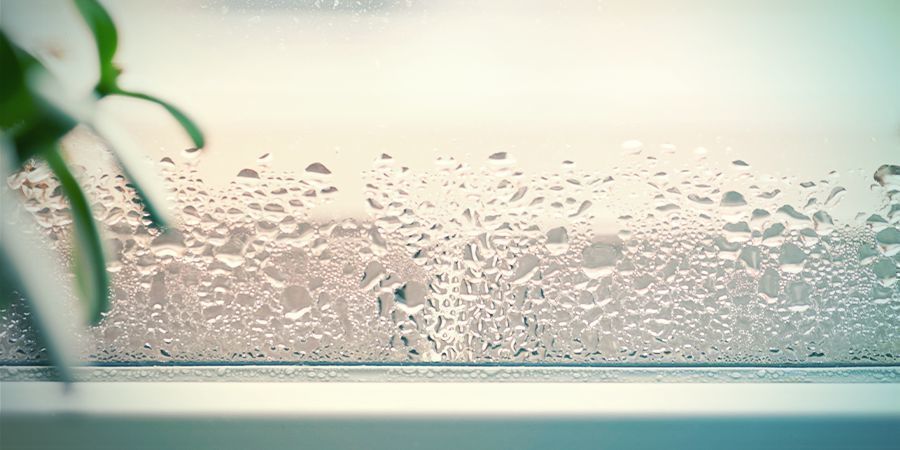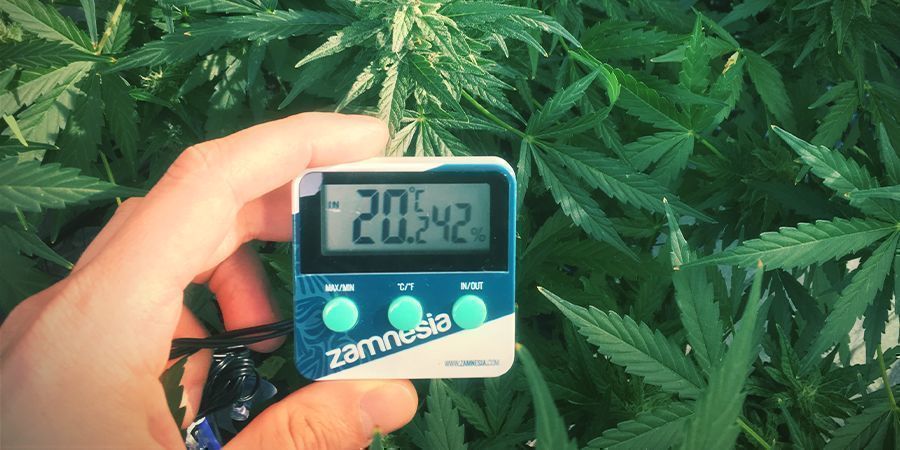
Why You Should Use A Humidifier When Growing Cannabis
When growing weed in a tent or dedicated grow room, you can control factors that are crucial to healthy plants and great yields. One of the important factors is air moisture. With a humidifier, you can regulate humidity to sustain an optimal climate for your plants.
If your grow room isn’t too big, you can even put a DIY air humidifier to work that will do the job without needing electricity. Let’s talk about why you should keep an eye on humidity when growing cannabis, and which humidifier is best for your setup. At the end of the article, we'll let you in on how to easily make a DIY humidifier from common household items.
What Is Humidity?
Air humidity is referred to as relative humidity (RH), with “relative” meaning in relationship to the highest possible humidity. 100% relative humidity means the air is fully saturated with water vapor and cannot hold more, creating the possibility of rain. Warmer air can hold more moisture than cooler air.
What Is a Humidifier?
A humidifier is an electrical appliance used to increase humidity levels in a room or building. They work by adding moisture to the air, for instance by misting or evaporating water, depending on the type. Most humidifiers are automatic. They incorporate a hygrometer (a sensor that measures humidity), which controls their operation. This way, a humidifier can ensure constant desired humidity levels in your growing area.
Note: Do not confuse a humidifier with humidipaks, which one can add to cannabis curing jars. These, such as the Boveda Humidipaks or Integra Boost, are entirely distinct from air humidifiers.
Why Is Humidity Important for Cannabis?
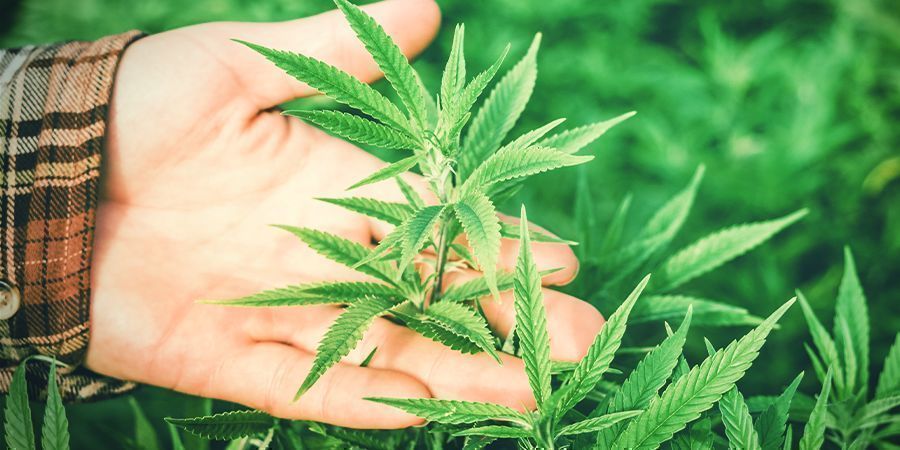
Along with soil and nutrients, good grow lights, and optimal temperatures in your growing area, humidity is another critical factor for healthy plants. A combination of low humidity and high temperatures can bring on serious issues. At humidity levels below 30% RH, photosynthesis slows down and growth is stunted.
But if humidity levels are too high, this will also lead to problems, such as poor growth and nutrient deficiencies. Moreover, high humidity can promote mould growth and increase the risk of plant diseases.
Optimal Humidity Levels for Cannabis Plants
There is no “one size fits all” humidity level that will encourage optimal results from seed to harvest. Instead, the optimal RH range depends on the age (stage of growth) your plants are in. Seedlings and clones prefer high humidity levels, while more mature plants, especially those close to harvest, require decreased humidity levels. Don’t let mould get hold of your precious harvest!
- Seedlings: 50–60% RH
Freshly sprouted plants don’t have an extensive root system. They need to take in water through their leaves. This is why high moisture levels are important during this stage. Shoot for 50–60% RH at the start of your grow.
- Vegetation: 40–60% RH
When your plants are out of the seedling stage and in full vegetative growth, you can reduce humidity levels by a notch. Around 50% RH is good all the way through the vegetative stage.
- Flowering: 40–50% RH
Reduce humidity further when your cannabis is in the flowering phase: Buds and moisture do not go together well! About 40–50% RH will do for the first few weeks of bloom.
- Late flowering: 30–40% RH
Late flowering is when maintaining optimal humidity is most important. The reason being, buds can easily trap moisture, which can lead to the growth of mould. Mould, of course, is one of the biggest threats to the success of your harvest, so bring humidity down to 30%.
- Clones: 70–80% RH
Clones don’t have roots at all. In order for them to take up water through their foliage, shoot for 70–80% RH. The high humidity requirement of clones is also why growers normally keep them under a humidity dome.
Benefits of Good Humidity Management
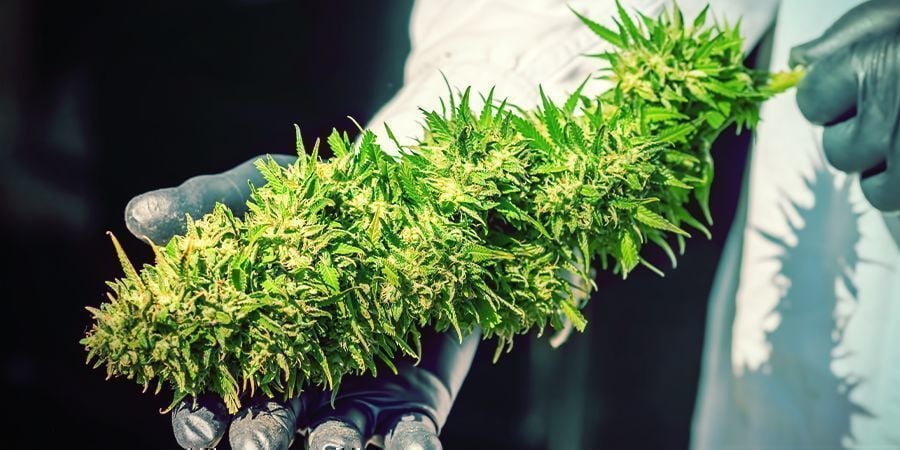
Keeping humidity levels in check throughout your plant’s life cycle will ensure healthy and vigorous plants. Expect:
- Increased germination rates
- Better yields
- Better protection from heat and cold
- Lower risk of disease
- Lower energy costs as less cooling is required
Consequences of Poor Humidity Management
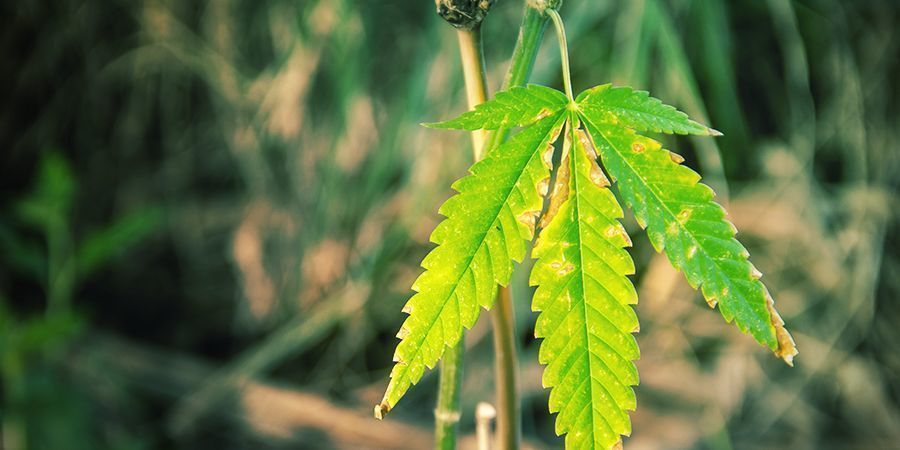
In contrast, the consequences of poor humidity management can lead to:
- Heightened risk of disease and mould (e.g. powdery mildew, root rot)
- Nutrient problems
- Poor yields
- Increased energy costs
- Heightened risk of pests (fungus gnats, etc.)
Factors to Consider When Choosing a Humidifier
When shopping around, you can find various humidifiers, from cheap €20 devices to elaborate models that can serve an entire building. Before installing one into your grow room, here are some criteria you’ll want to consider.
Budget

How much you’re willing to spend will likely be the main factor. The good thing is, a decent humidifier doesn’t need to be expensive. You may find one for a small tent for under €50. On the other end of the spectrum, you can spend several hundred on a good-quality humidifier with more bells and whistles.
Noise
Noise can be a concern if you’re growing in your home. Not all humidifiers are necessarily quiet, and a constant loud noise may be a nuisance that you don’t want. Moreover, it can be a cause of suspicion for others as well. If you want a quiet operation, check out ultrasonic humidifiers, warm misters, and air washer humidifiers (more on the various types of humidifiers below).
Grow Room Size
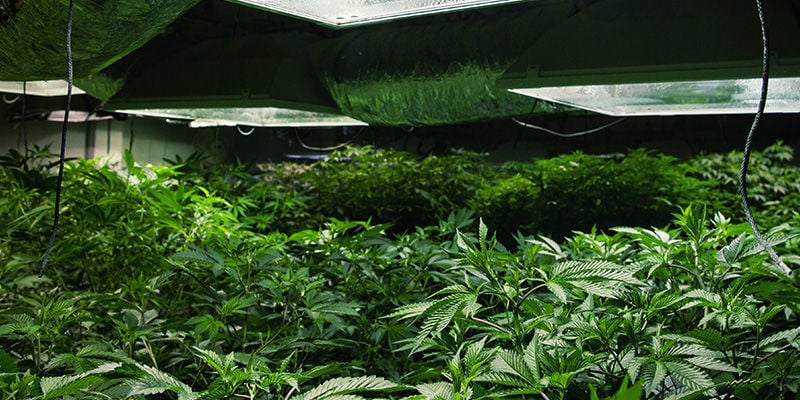
This is a very important one! The humidifier needs to be able to serve your entire space. Make sure to check the description to see whether a given humidifier is adequate for your area. If you’re growing in a small tent, this may be less of an issue, as most humidifiers shouldn’t have a problem serving spaces of this size.
Rough guidelines based on area:
- Small humidifiers: 28m²
- Medium humidifiers: 29–46m²
- Large humidifiers: 47–92m²
Automated vs Manual
It’s recommended you choose an automatic humidifier that operates based on current relative humidity levels. Almost all decent home humidifiers have this feature. Otherwise, it will be fairly difficult to maintain consistent humidity levels, which is important for your plants. Alternatively, you could get a manual humidifier, but you may want to control it externally.
Maintenance & Hygiene
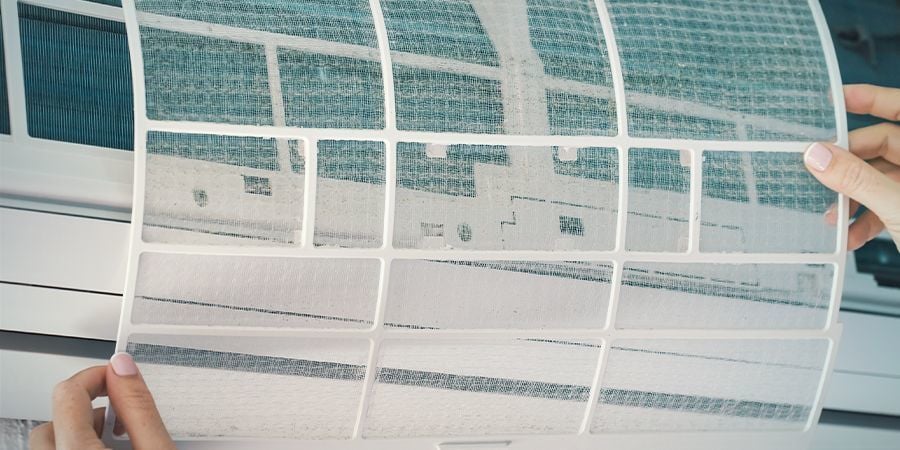
Is the humidifier easy to maintain and clean? This is important as you'll want to perform regular upkeep. You don’t want bacteria and other nasties spreading into your grow room. Some humidifiers may also utilise filters, which you’ll need to clean or replace at regular intervals.
Outdoor Environment
Your local climate will help determine whether you should get a cool mist or warm mist humidifier. If you’re growing in a hot and dry climate, you’ll be best off with a cool mister. On the other hand, if your climate is cold all throughout the year, a warm mister may be better. If you’re living in a moderate climate with hot summers and a cool season, an ultrasonic humidifier may be optimal as these normally offer both options.
Mineral Dust
Some types of humidifiers (ultrasonic and cool misters) can produce white calcium residue in the grow room from their continued operation. This mineral dust can clog up filters and may affect the quality of your buds. Evaporators and warm misters won’t leave calcium dust, so this won’t be an issue. Humidifiers that you fill with distilled or demineralised water also won’t leave mineral residue on your plants.
Types of Humidifiers
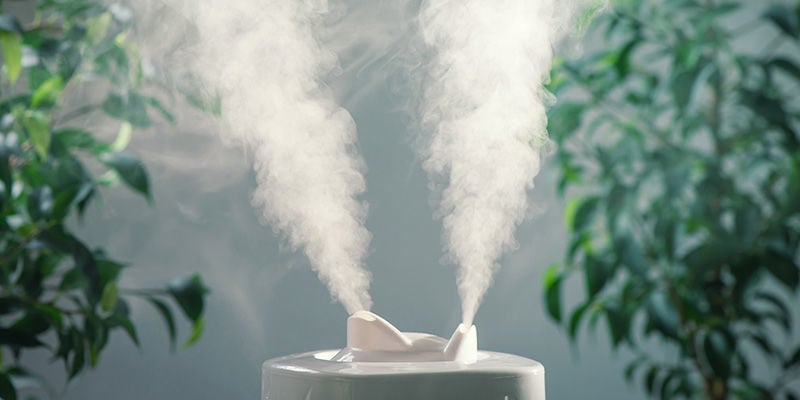
The principle of all humidifiers is the same, but there are some differences in how they work. Here are the five different types of humidifiers available:
Ultrasonic
Ultrasonic humidifiers are generally regarded as the best type, as they provide both cool mist and warm mist options. This allows for added temperature control along with humidity. This is important as there is an important relationship between temperature and humidity: Lower temperatures increase relative humidity.
Features:
- Has both a warm and cool mist option
- Easy Maintenance
- Quiet operation
Cool Mist
Cool mist humidifiers disperse a stream of room temperature mist throughout the environment. These units provide humidity and remove heat from the air with a cooling effect.
Features:
- Efficient for large spaces
- Good for outdoor grows and greenhouses where cooling might be desired
- Simple to operate and maintain
Warm Mist
The most common type of humidifier. Water is first warmed up before it's released into the room. It’s a good option for cooler environments, as this will also increase temperatures a bit.
Features:
- Quieter than cool misters
- Heat kills potentially harmful bacteria in the water
- Affordable
Evaporative
This type of humidifier works by blowing air through a moist filter; it won’t affect temperatures in the grow room.
Features:
- No mineral residue from mist
- Easy to operate and maintain
- Filters can remove bacteria and other pathogens
Air Washer
An air washer operates like a humidifier and an air filter all in one. Available as cool mist only.
Features:
- Good for large areas
- Easy and quiet operation
- Removes dust particles and harmful pathogens from the air
Other Ways to Boost RH
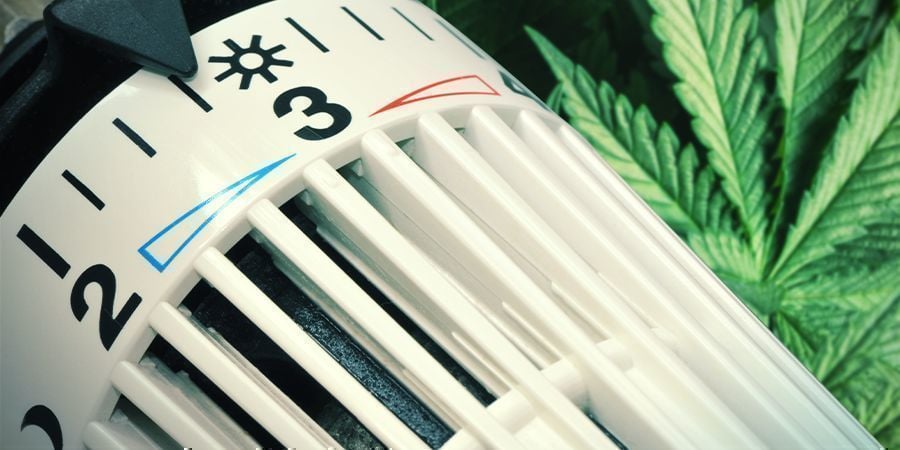
If you’re on a tight budget and don’t want to get a humidifier, there are alternative ways you can increase relative humidity.
1. Introduce Larger Plants Into Your Grow Space
As large plants release moisture, you can add some into your grow room to increase RH. Tip: It doesn’t necessarily need to be cannabis! Whether that’s an option depends on available space and resources.
2. Place Water Bowls in Strategic Places
Fill several bowls with water and place them strategically, for example near air intakes or in the path where a fan is blowing. You can increase the effectiveness of this method by adding sponges to the water (more surface area = more moisture is evaporating).
3. Hang Wet Towels

Not very practical as a long-term solution, but can be a good method if you’re in a pinch: Hang wet towels or sheets in your grow room. Keep them moist with a water sprayer.
4. Lower the Temperature
Cold air holds less moisture than warm air. This means decreasing temperatures will increase relative humidity, as the point of maximum RH (100%) also decreases with colder temperatures.
5. Make Your Own Humidifier!
Lastly, you can also make your own DIY air humidifier. Don’t worry, it’s much easier than you may think. Our DIY humidifier is easy and quick to assemble, and it doesn’t require any electricity to work!
How to Create a Homemade Humidifier for Your Cannabis Grow Room
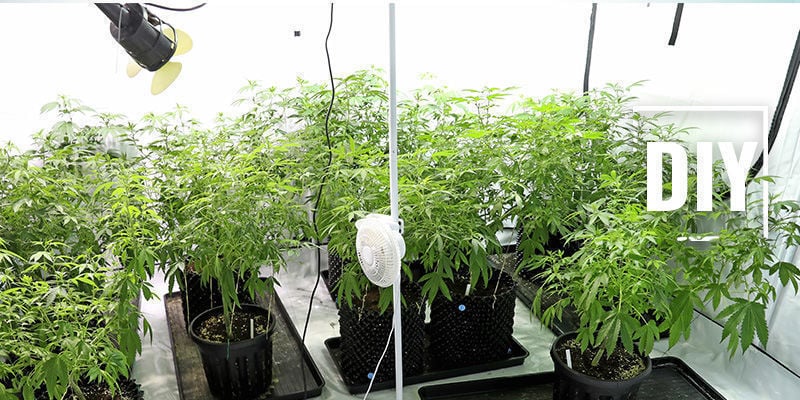
Using a homemade humidifier is a great alternative if you're trying to save money. It provides your plants with all the benefits of a commercial unit, and in some cases can be even better. For example, our DIY humidifier won’t leave nasty residue in your grow room like some cheap units. Plus, it doesn’t need electricity, which is another convincing argument!
Equipment
- Large bowl or tray
- Large towel
- Coat hanger
- Hygrometer
Setting Up Your DIY Humidifier: Step-by-Step
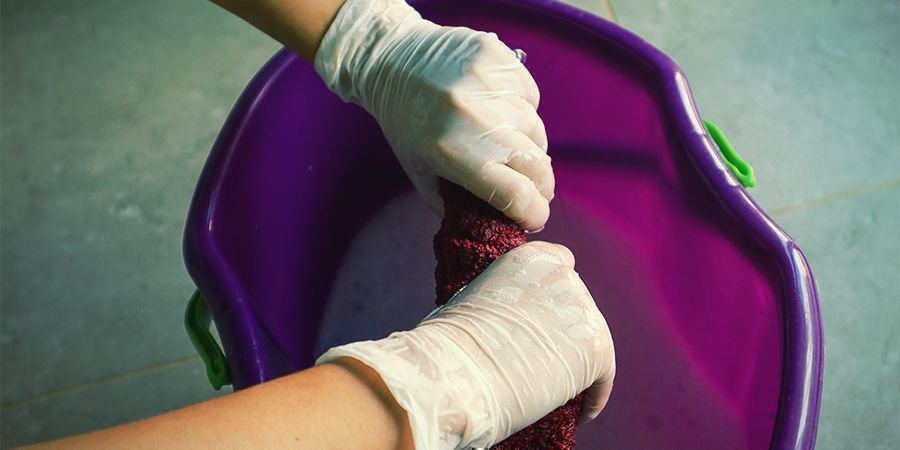
-
Hang the large towel on the coat hanger.
-
Fill the bowl with water.
-
Find a suitable space in your growing area where you can hang the towel, with the bowl placed underneath. A good area is right before an air intake.
-
Hang the towel so that the bottom half is submerged in water and the upper half isn’t. The towel will soak up the water from the bowl and disperse it into the air.
-
After some time, use the hygrometer to check air moisture levels. Humidity still too low? Use a larger bowl or a larger towel, or place multiple humidifiers throughout the grow room. As your grow progresses and humidity requirements decrease, you can remove your humidifiers one by one to accommodate the desired RH level.
Important: Don’t forget to change the water and to wash the towel every few days. Our DIY humidifier may not be the fanciest of solutions, but it will sure get the job done while costing essentially nothing.
-
 3 min
8 January 2021
What Are Dehumidifiers And How Do You Use Them To Grow...
Maintaining proper humidity in your growing space can be quite the task, especially if you live in a more tropical climate. If you're constantly fending off airborne moisture while you grow, we...
3 min
8 January 2021
What Are Dehumidifiers And How Do You Use Them To Grow...
Maintaining proper humidity in your growing space can be quite the task, especially if you live in a more tropical climate. If you're constantly fending off airborne moisture while you grow, we...
-
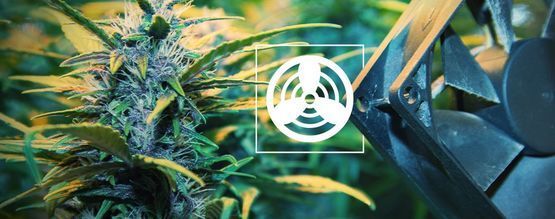 5 min
13 June 2019
Ventilation In The Cannabis Grow Space
Proper ventilation will help ensure a healthy and successful indoor grow. A constant supply of fresh air provides plants with adequate levels of CO₂ and keeps humidity in check so mould doesn't...
5 min
13 June 2019
Ventilation In The Cannabis Grow Space
Proper ventilation will help ensure a healthy and successful indoor grow. A constant supply of fresh air provides plants with adequate levels of CO₂ and keeps humidity in check so mould doesn't...
-
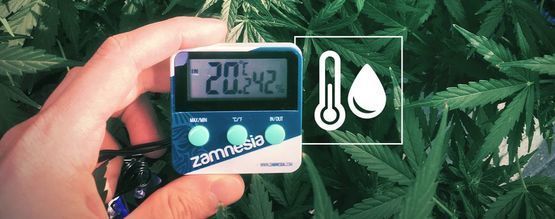 2 min
13 June 2019
Humidity In The Cannabis Grow Space
Among the factors that decide whether your cannabis grow will turn out successful is humidity. Optimal humidity varies depending on the stage of growth your cannabis plants are in. Learn why...
2 min
13 June 2019
Humidity In The Cannabis Grow Space
Among the factors that decide whether your cannabis grow will turn out successful is humidity. Optimal humidity varies depending on the stage of growth your cannabis plants are in. Learn why...
-
 4 min
2 November 2016
The Ultimate Temperatures For Growing Cannabis
Optimal temperatures are essential for creating top-notch bud. Let's find out the details behind the thriving temps of cannabis plants, and how to achieve them.
4 min
2 November 2016
The Ultimate Temperatures For Growing Cannabis
Optimal temperatures are essential for creating top-notch bud. Let's find out the details behind the thriving temps of cannabis plants, and how to achieve them.





 United States
United States

